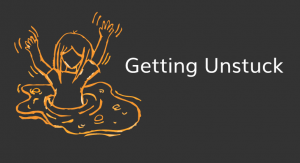Movable Ink’s new Da Vinci AI offering is aimed at serving lifetime customer value rather than immediate revenue maximization.

At its Think Summit conference earlier this month, Movable Ink announced the first tangible outcome of its February acquisition of content personalization engine Coherent Path. It’s called Da Vinci.
Da Vinci provides AI-powered personalization capabilities intended to go beyond identifying the next-best-action to secure a conversion. It’s objective is to optimize customer lifetime value by building meaningful relationships.
Movable Ink’s journey. New York-based Movable Ink has been around for over ten years now. It initially established itself as a solution to generate dynamic email content that rendered at time of open, creating the possibility of personalizing emails in real time. Over the past few years, however, it has broadened its offering, promising to generate real-time personalization across the range of customer touchpoints.
CEO and co-founder Vivek Sharma explained: “Our customers kept bringing up personalization. Years ago, that was equated with recommendation engines. It was clear from the way our customers were talking that they needed something much bigger than simply that.” The answer, for Movable Ink, was data-activated creative. “We’re the center of how they get the benefit of their data, be it from a CDP or other data management platform.”
Movable Ink activates data insights to generate multi-channel creative content. “Systems of engagement the companies are using are often channel specific,” said Sharma, “so there are email service providers like Salesforce Marketing Cloud, or engagement platforms like Braze, or SMS marketing like Attentive – we do content generation and decisioning that makes those other investments even more effective.”
LTV rather than campaign revenue. Using AI to achieve personalization at scale is nothing new, of course. Indeed, Da Vinci joins a gallery of impressively named AI solutions, from Salesforce Einstein to Adobe Sensei. But in de-emphasizing the next-best-action approach, Da Vinci differentiates the value it sets out to bring.
“How do you map the relationship between a product catalog and customer behavior over time?” Sharma asked. The objective is not just to reinforce a customer’s interest in products and services they’ve looked at in the past, but to anticipate their interest in other products and services based on past behavior. This means thinking outside the box of campaigns.
“There’s the old paradigm of running campaigns,” said Sharma. “The campaign process itself is decades old — and its super-laborious today with all that’s been bolted on. You have to get data, clean it, transform it, put all these pieces together. Being beholden to the campaign process makes it harder to be people-centric. How do you serve people what they’re looking for?” The traditional campaign approach also leads to short-term thinking. “What’s the click-thru rate, what’s the revenue for this particular campaign?” A better question, said Sharma, would be “How do you build a better customer over time? If you exposed them to all your products and services, they could be even more loyal, likelier to stay on your list and want to engage with your brand a lot more.”
It’s about the lifetime value of the individual customer — for which Da Vinci can provide metrics, he said — rather than revenue maximization for individual campaigns.
Against the background of the pandemic. Sharma reflected on the challenges of the past two years. “In aggregate, Movable Ink did really well – but when you look at the individual companies we work with, or the industries that they’re in, there was a lot of variability. On the positive side, e-commerce did really well, drug stores did really well, financial service firms did well, streaming media did great. But the things people couldn’t do any more – cruise lines, airlines and hotel chains we work with – they had to pause their business. By and large they’ve kept up Movable Ink because they had to still create loyalty and a connection to their customers, but the businesses were struggling to some degree.”
Many businesses had to face the hard truth that digital transformation is a necessity, not a luxury for prosperous times. “Digital transformation is a multi-year effort and brands have to make those investments through bull and bear markets,” he said. “The ones who don’t make those investments are going to find that they’re becoming obsolete compared with digital brands that get it right away and are very nimble. You can’t be a laggard now because the world is moving past you.”
Why we care. The thinking behind Da Vinci reflects a number of trends in today’s marketplace. The emphasis on brand trust, customer experience,engagement, empathy and community, and long-term relationships. Some CPG brands might be able to get by with driving simple, iterable conversions, but it’s increasingly the case – even in B2B – that customers will be loyal to brands they like spending time with; brands that not only meet but anticipate their needs.
If Movable Ink is building algorithms that can design a personal journey for a lifetime – an ambitious project – they are moving towards meeting this market’s needs.
The post Movable Ink’s Da Vinci thinks outside the campaign box appeared first on MarTech.
MarTech(13)






